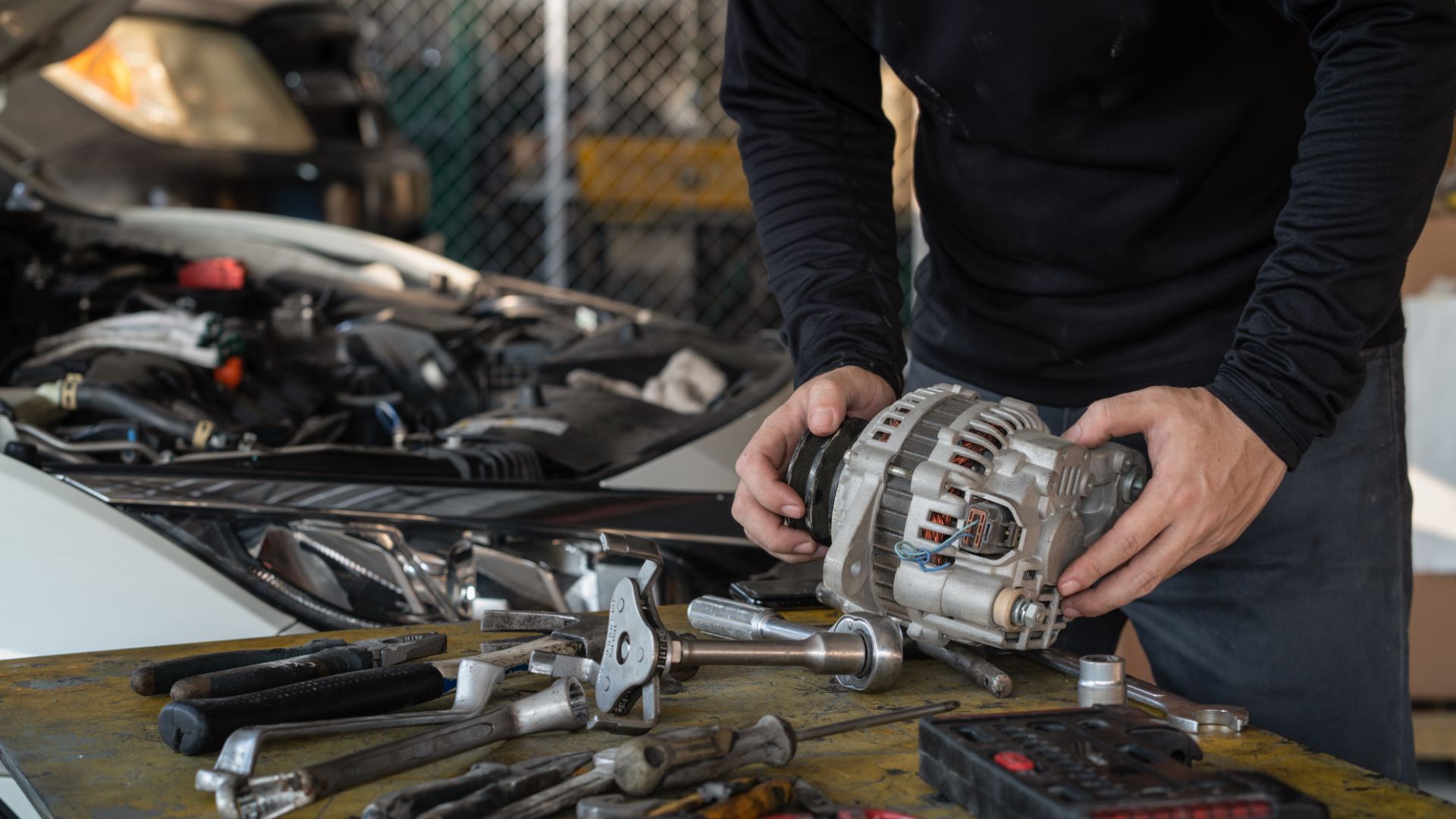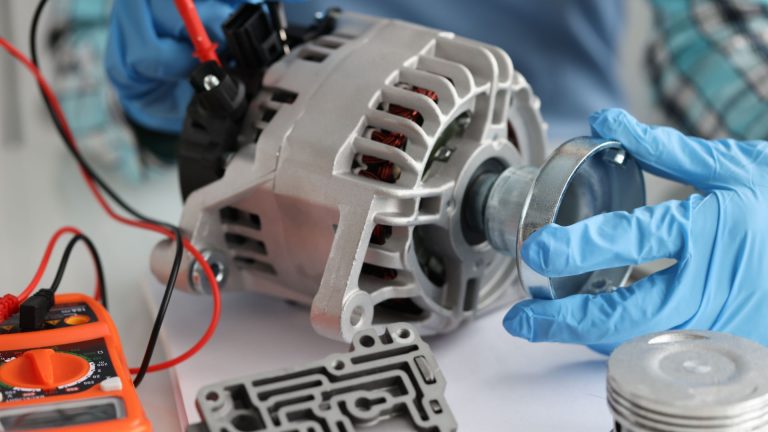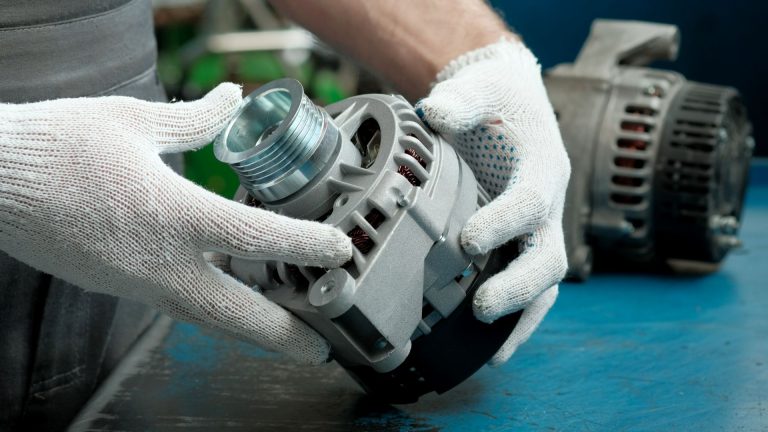How long does it take to replace an alternator?
Get a clear idea of the average time required for an alternator replacement.

Repairs generally seem like long affairs, depending on the extent of the damage. Your mechanic will first have to identify the root of the problem and then devise solutions. Finding the primary cause can take days for some issues.
Replacements, on the other hand, seem easier than repairs since there is no need to find any problem as the task is already known. One would expect the mechanic to complete a replacement in a few days, but that depends on the part being replaced. Newer cars with newer technologies may take longer than usual when you take them to your local mechanic.
Replacement of alternators is a delicate procedure, as a mistake may cost you a lot later. The process itself is straightforward and should take just about two hours.
This article explains how to replace an alternator and how long your alternator should stay with your mechanic.
Parts of the alternator

The alternator is a vital part of a car, as it provides the electricity the starter motor uses to start it. It also charges the battery and generates electricity which the electrical components in the car use to discharge their duties. In case of a faulty alternator, many drivers wonder – can you jumpstart a car with a bad alternator? Let’s explain a bit more about how alternators work to help with these matters.
The major components of alternators are the rectifier, rotor, slip rings, slip ring end bearing, stator, drive end bearing, and pulley. The rectifier is responsible for converting alternating current to direct current during charging, and the slip rings accept this direct current and use it to power the rotor.
The rotor is akin to a spinning electromagnet as it spins inside the alternator, rotating the pulley and drive belt system. The pulley, drive belt system, and rotor shaft are all connected to give rise to the rotation that instigates the charging process.
The alternator’s body consists of an iron ring with several coils of wire around it. It is called the stator, and it creates an electrical current when a magnetic field is present. The other parts – the slip ring end bearing and the drive end bearing-support the rotor shaft’s rotation.
Modern alternators are paired with voltage regulators that control the power moving from the alternator to the battery. The charging process is safer with the voltage regulator as the risk of battery overcharge is significantly reduced.
How can I change my car’s alternator?

Alternators last seven years on average and sometimes suffer issues that reduce their lifespan. Replacing an alternator is easy enough to do yourself at home.
The first thing you have to do when changing your vehicle’s alternator is to save the memory on your car’s preset electronics. You need a memory saver to do this. The device uses the correct current and voltage to keep the existing data in the RAM safe until the replacement procedure is over.
Failure to use the memory saver means that your car’s computer system will have to relearn the sensor values again. The whole process of relearning can be pretty unnerving, and in some vehicles, the engine might only perform as it should once it relearns all the sensor values.
The next step is to disconnect the negative battery cable. The negative battery cable is usually colored black and smaller than the positive cable. Endeavor to use the proper wrenches for the disconnection.
Your next move at this stage is to loosen the belt tensioner and the serpentine belt. However, unlike the belt tensioner, the serpentine belt has to be removed entirely.
The next step is to remove the connectors or wiring harness before you can get to the alternator. Now, you remove the alternator.
While carrying out the steps mentioned above, you must pay close attention to the connections and parts you are removing, so you will have no problem figuring out where they were before. When installing the new alternator, ensure it aligns and fits with the boltholes; otherwise, you will have a problem.
Then, you place your replacement belt where it should be, ensuring the tension is right. Now reconnect your negative battery cable.
Can I use my car immediately after changing the alternator?

Your car should start just fine immediately after changing the alternator, but that is not a good practice. The best thing to do after changing the alternator is to confirm that the alternator installation is successful. To do this, you have to:
Check your car battery
It is important to note that a faulty battery will cause your alternator to fail early. Therefore, you must ensure the battery is in good condition and properly connected.
Check your alternator’s cables and wires
Loose connections have the potential to damage the alternator by increasing the resistance in the electrical system. To avoid losing your alternator early, ensure that the wires and cables are connected to the right spots and tightly secured.
Check your alternator pulley and fan
A wrongly placed or damaged fan and pulley give rise to vibrations which can damage a new alternator. The alternator can drive at the wrong speed or get inadequate cooling when these two parts are unbalanced.
The best way to test the balance of these components is to check if the rotor spins freely after you’ve unpacked the alternator. Install the pulley and fan before spinning the pulley unit to 70 to 80 foot pounds if the rotor does not spin.
Confirm your hardware
Double-check the hardware you use to install the alternator, such as the end bearings and bolts, ensuring they are the right size and quality.
Check your alternator speed
If your alternator does not gain the right speed, the voltage regulator will not start. Therefore, as one of the final tests, you have to check your alternator’s speed.
Test the new alternator
If all the other tests are positive, you then test your alternator. You require a multimeter for this final step which you will use to check the output voltage the alternator is churning.
A reading between 14.2 and 14.7 volts means everything is good to go. A reading under 14.2 and above 14.7 volts implies that the battery is undercharging and overcharging, respectively.
To be doubly sure of the abilities of your new alternator, turn on all the electronic accessories of your vehicle, such as the radio, fan, lights, and others. When you switch the car off, the voltage reading should be at least 13 volts with these accessories on and not less than 12.6 volts.
As stated above, any deviation from the stipulated amount of volts implies something is wrong. Otherwise, your car is ready to continue serving you.
How long does it take to replace an alternator?
When it comes to switching a faulty component with a new one, the big question is – how long does it take to replace an alternator? It takes a professional about two hours to change a car’s alternator, provided all the necessary parts and tools are available.
You can change your car’s alternator using the steps described above. Still, the time you would use to finish the procedure successfully depends on your history and capabilities with cars. Nevertheless, no matter your disposition with vehicles, you should be able to change and test an alternator in less than five hours if you follow the steps right.
How much do professionals take to replace an alternator?
The best place you can get quality alternator replacements is at a dealership. They use original equipment manufacturer (OEM) parts, eliminating the need to worry about the quality of the components used for the replacement procedure.
Replacing an alternator at a dealership costs more than replacing it at a local auto shop. Your bill could be approximately $500 or more (parts and labor).
If you opt to go with a local auto mechanic, they charge less but might use aftermarket parts. Aftermarket alternators come with a lot of risks due to their power-hunger nature. These risks include battery and engine death due to inadequate power.
The aftermarket alternator costs about $100 to $200 less than the OEM alternator parts. Also, remember that alternator replacements usually require other replacements, like replacing the battery or serpentine belt.
Your best bet against alternator or battery problems happening some months afterward is to replace all the other parts that have a mutual relationship with the alternator which have issues at once. Though the OEM parts cost more, they are much better than the cheaper aftermarket parts.
Our take
Replacing the alternator takes a professional two hours to complete. It is a relatively simple process you can finish at home in under five hours to save money on labor.
The only disadvantage to doing it yourself at home is that since you are not a professional, you may overlook the other underlying issues that can cause your new alternator to fail. Therefore, unless you are familiar with how the alternator and its surrounding elements should look and behave, it is best to take it to a professional to get thorough and preventive maintenance along with the replacement.
How long should it take a mechanic to replace an alternator?
It should take a mechanic about two hours to replace an alternator. Do not expect to get your car back after two hours, though, as the mechanic will have to test the new alternator and ensure that there is no other fault that may destroy the new alternator.
Can an alternator be replaced in a day?
Yes, you can replace the alternator in a day. The procedure for the replacement is easy to follow.
Is replacing alternators easy?
Replacing the alternator is an easy job. Someone new to automobiles can follow the steps carefully and change an alternator.
Is replacing an alternator a big job?
Replacing an alternator is a small job. It is one of the simplest maintenance tasks a beginner can use to get used to a car’s inner workings.